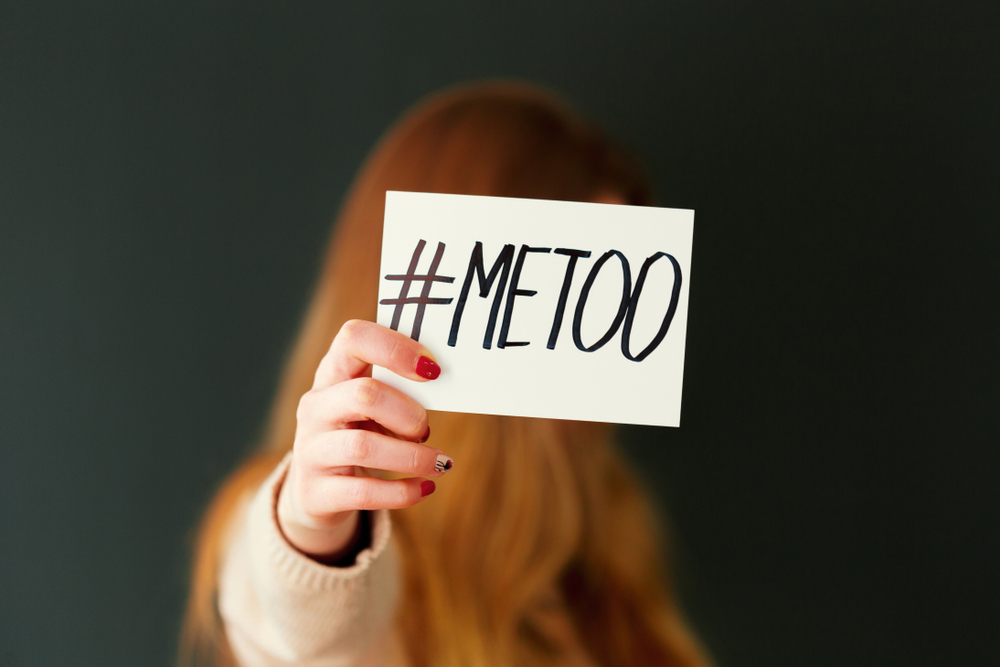
Trust in Banks has been weakened
The implicit trust which many Australians had in their banks and the belief that financial institutions would generally do the right thing has been rudely shattered. The final report of the Royal Commission into misconduct in the Banking, Superannuation and Financial Services Industry laid bare the sorry state of affairs within Australia’s leading financial institutions. Financial misdeeds were not the acts of a few “bad apples,” but pervasive across the industry. Greater regulation and oversight is now inevitable, but it is widely recognised that this by itself is not enough to meet the challenge of reform.
“…every financial services entity, named in the Commission’s reports or not, must look to its culture. Every financial services entity must look again at the way it governs itself and manages not only its employees but also the entities and individuals who act as its intermediaries or are seen by consumers as representing or associated in some other way with the entity”. [Commissioner Kenneth Hayne, Royal Commission]
Banks ignored their deteriorating Culture
The Federal Reserve Bank of New York has pointed out: “[financial institutions]… exist, in part to benefit the public, not simply their shareholders, employees and corporate clients”.
Nevertheless these principles can be lost sight of when values and controls go awry. As we now know, in the Australian institutions examined by the Hayne Commission greed and self-interest were clearly on display in financial rate manipulations; giving totally inappropriate financial advice; encouraging vulnerable people to enter into unnecessary and onerous loan agreements; failing to implement controls against money-laundering; charging fees for no service; and lying to regulatory bodies.
The damage to banks’ brands and the trust they have lost will require each of them to examine and to recast their value systems. Calls for “a change in culture” have been coming from many quarters and the institutions themselves now seem to recognise that across the industry as a whole, values and norms had gone badly awry. But there is currently little consensus as to how to repair these cultures.
Since leaders set the tone for the any company cultures, they bear ultimate responsibility when the culture is shown to be blighted. In the process of cultural overhaul, leaders must show unequivocally that they are aware that their behaviour and attitudes serve as models for everyone in the organisation.
What went Wrong in the Culture of the Banks?
Repairing a culture that is acknowledged to be severely impaired requires, in the first instance, an understanding of what culture is and how it evolves.
Culture is a concept that describes a complex set of implicit understandings that exist within a group. Every organisation has a culture, but it is not fixed or immutable and it is influenced by many sources. Primarily it is the leadership which shapes the culture either through pronouncements and conscious behaviour on their part or else passively by what they are seen to condone or permit.
Organisational Culture has been described as:
“ …the shared values and norms that shape behaviours and mindsets within an entity. It is what people do when no-one is watching. Culture can drive or discourage misconduct”
The Hayne Report set out some signposts of a healthy corporate culture
There are basic norms which underpin an acceptable commercial culture
-obey the law
-do not mislead or deceive
-act fairly
-provide services that are fit for purpose
-deliver services with reasonable care and skill; and
-when acting for another, act in the best interests of that other
These signposts basically tell us whether organisational culture is meeting or falling short of acceptable commercial and community standards. But they do not describe or identify the essence of a culture which organisations should aspire to and which, amongst other things, might promote more ethical behaviour.
How Diversity and Inclusion Contribute to a Robust Culture
It is not only in Australia that the contagion of poor culture and misconduct by financial institutions has made its appearance. Following the Global Financial Crisis, the Group of Thirty (G30) published a series of reports focusing on governance of global financial institutions.
In the latest of these reports Banking Conduct and Culture – A Permanent Mindset Change, the G30 made 12 specific recommendations which would place the banks firmly on the path to cultural reform. Notably amongst these recommendations were these two:
Banks should make efforts to promote diversity and inclusion in the workplace–
The G30 notes that a diverse workforce has numerous business benefits and fosters better decision-making processes but for this to be truly successful all employees need to be fully engaged and empowered, something which can only be achieved via an inclusive environment
Banks should encourage an environment of ‘Psychological Safety’
Here the G30 notes that employees should be encouraged to speak up without fear of retribution and employees must be made to feel that their voice will be heard and their concerns will be addressed.
And also a statement from top officials of the Central Bank of Ireland (Rowland and Sibley, Oct, 2018):
“Low levels of diversity among key decision-makers in banks and other financial services create excessive risks and inhibit necessary cultural change.
Similar people looking at similar information and facing similar circumstances are, unsurprisingly, likely to rely on similar assumptions and make similar decisions. This type of groupthink contributed to the depth of the financial crisis internationally and in Ireland and also contributed to many of the conduct scandals that have subsequently emerged.”
Greater Diversity Needed at the Top in Financial Institutions
On the face of it, these comments appear equally relevant to the Australian landscape.
The Australian Human Rights Commission’s ‘Leading for Change report (2018)’ found that 72.5 per cent of ASX 200 CEOs had an Anglo-Celtic background; 23.5 per cent had a European background and just 4 per cent had a non-European background – figures that are entirely out of kilter with the proportions in the general Australian population.
The Financial institutions are little different from other ASX 200 companies in their lack of diversity at leadership level. According to the 2018 report of the Australian Institute of Company Directors, only two of the banks, Macquarie and Westpac, had reached the baseline goal for that year of 30% female directorship. As far as ethnicity is concerned, board members and directors of these institutions are almost exclusively Anglo-Celtic in origin.
The question may legitimately be asked as to whether the failure to deal with eroding ethical norms in financial institutions was a function of similar thinking by similar people. Did the lack of sufficiently diverse thinking in the leadership of the financial institutions lead to complacency and the institutional diffusion of unconscious biases – entrenching beliefs that there are no alternative ways of doing things?
Just as was the case with overseas banks, the Hayne commission revealed that uniformity of thought prevailed at leadership and executive levels, not only within each institution but across the whole industry in Australia. As they battled for short-term financial advantage, very few in these institutions either noticed or acknowledged the extent to which the erosion of basic norms became acceptable.
Groupthink makes Unethical Behaviour more Likely
The relationship between organisational culture and ethical or unethical conduct from its employees has been emphasised by the Financial Stability Board (FSB) in its recent report on strengthening governance frameworks. The FSB observes that governance frameworks, culture and conduct all interact and mutually influence each other either positively or negatively.
The FSB report sets out in the table below a number of key cultural drivers of misconduct along three broad parameters: leadership; decision-making; and values and behavioural norms. Symmetra’s own research confirms that many of these drivers of misconduct are more likely to emerge in organisations which are not inclusive or largely homogenous. In working with clients to build inclusive cultures, we specifically assess many of the highlighted behaviours below and work to address the gaps we discover.
Financial Institutions need to get strategic on D&I
The solution we propose is the adoption by Australian financial institutions of a more progressive and strategic approach to diversity and inclusion. The focus on diversity should not be limited to the goal of improving representation of diverse groups at leadership levels but rather on the creation of teams which exhibit the greatest diversity of thought. Increasing demographic diversity will certainly contribute to this as it is a reliable indicator of diversity of thought, and should be positioned as the means to achieving this end, but not as an end in and of itself.
But more importantly with respect to inclusion it is critical to focus on what inclusive leadership looks like and how its scope has evolved dramatically over the last decade. Inclusion, and inclusive leadership are no longer only about valuing, respecting and engaging with difference, but now encompass a wider and more complex range of behaviours.
Symmetra’s model of inclusion, which we have refined over many years of working with global clients is purpose-driven, and designed to entrench a trajectory for business growth, performance and innovation.
This paradigm encompasses 11 competencies:
- awareness of differences
- learning mindset
- valuing diversity
- engage effectively with difference
- working in flexible and agile ways
- counteracting bias
- openness to new ideas
- embedding psychological safety
- boundary spanning
- advocating for diversity and inclusion
- creating empathy and trust with customers
At a more granular level and looking closely at the drivers of misconduct identified by the FSB, it is clear that inclusive behaviours so defined will reduce the likelihood of misconduct becoming the norm in an organisation. In inclusive organisations mindsets will be attuned to the interests of colleagues, customers and other stakeholders rather than only of oneself; leaders will be aware of their fallibility and will welcome contesting and contrary ideas; information will be shared and disseminated across the organisation leaving fewer opportunities for mistakes through ignorance; debate will be the rule rather than the exception so that a greater range of options can be considered when decisions are taken; and team members will speak up to raise doubts or reservations about questionable actions so that mistakes can be forestalled rather than rectified after the event.
Inclusion must Extend to Customers
An inclusive culture is the antithesis of one where self-interest and greed prevail. An inclusive culture is one where the needs, aspirations and potential contributions of employees, stakeholders and customers are always part of the mix when important strategic and other decisions are made
Customers are, of course, the group which have been the primary victims of bankers’ misdeeds and therefore it is appropriate that in any paradigm shift on the part of the banks, their participation is sought. The concept of ‘customer inclusion’ which is embodied in our model (and should form part and parcel of any inclusive culture) is much more expansive than the notion of ‘customer centricity’ which involves merely focusing on the needs of and interaction with the customer. Customer inclusion is a process of establishing an authentic partnership with the customer, showing empathy and generating confidence and sustaining these over the long term. It is probably fair to say that in the absence of a genuine outreach to customers the broken bonds of trust will not be restored.
Conclusion
The wholesale rebuke delivered by the Hayne Commission to the financial services industry and the ensuing outrage from a whole range of institutions and individuals demands that this industry will be forced to take stock. It is unlikely that any of these institutions will be able to carry on in the same cavalier way as they did previously. The industry will certainly have to face up to the formidable challenge of culture change. But this is a challenge which should be welcomed, because if successful, these institutions (and Australian society) will be far better for it.
For each individual institution the test will be whether they will make changes defensively to minimise the risks of regulatory enforcement or whether they will be proactive in building a system of positive values, and an inclusive culture, to make their business more sustainable. As we have argued, an inclusive culture is a sure way of ensuring that at least some of the negative drivers of misconduct highlighted by the FSB are eliminated in a given organisation.
Regulators, legislators, stakeholders and customers will be watching intently to see whether real progress is made. It is thus essential that the institutions take steps to start building inclusive behaviours and measure and benchmark themselves in this regard. Application of suitable inclusion surveys, assessments of team and leadership inclusivity and other metrics, together with the maximum degree of transparency, will all assist in determining whether real cultural change is taking root.
It remains to be seen which of Australia’s financial institutions will rise to this challenge to be seen as trustworthy citizens in an industry which has let down so many Australians.

















